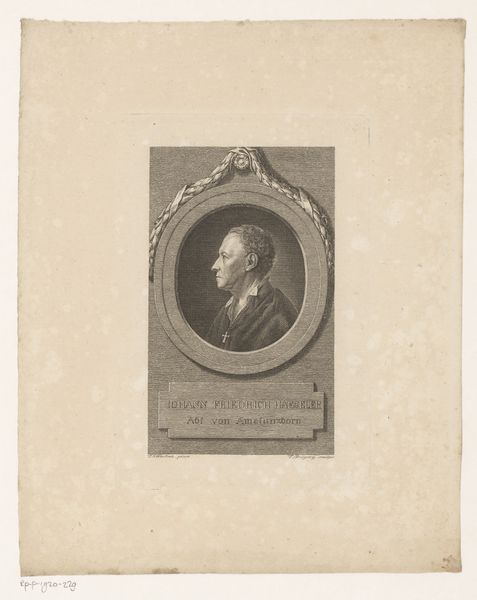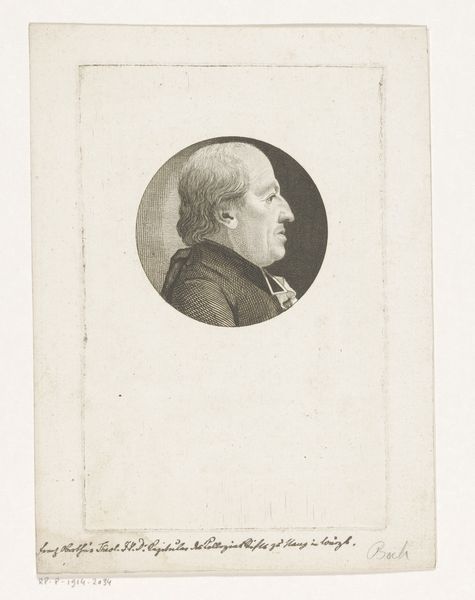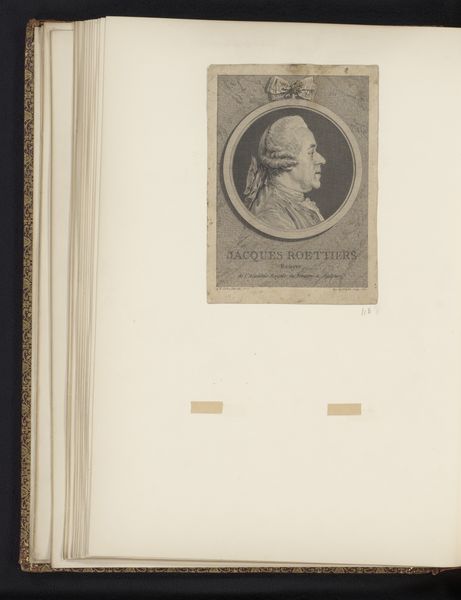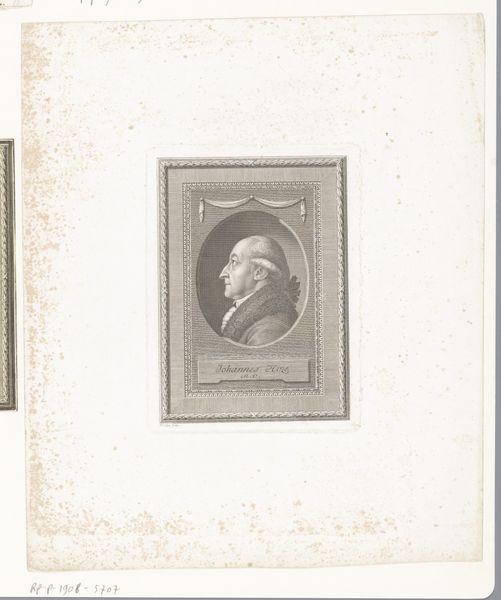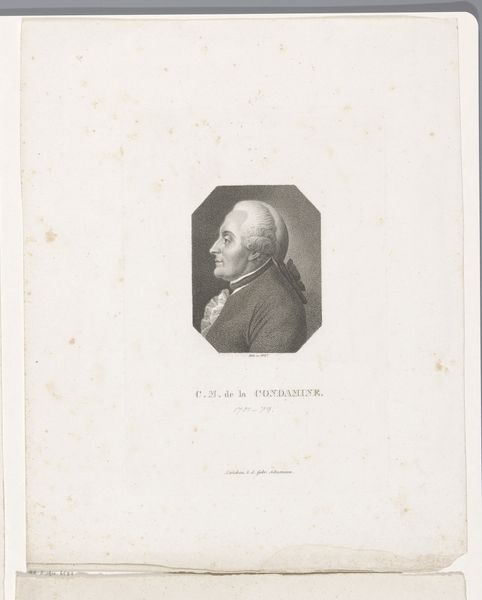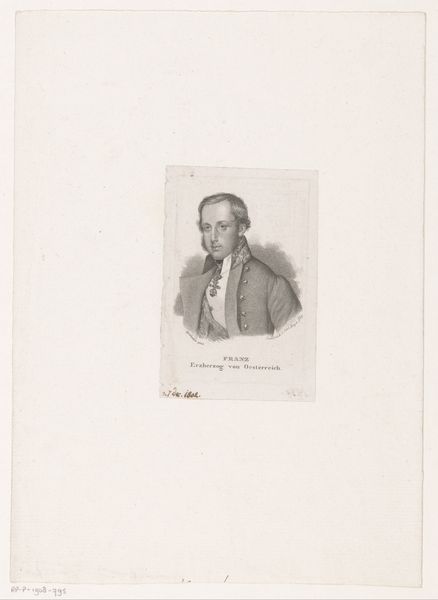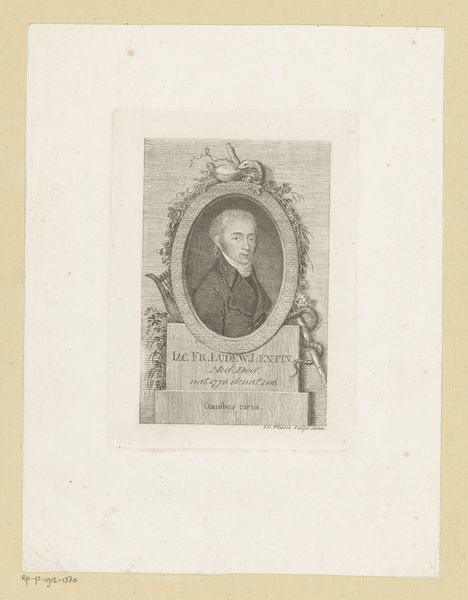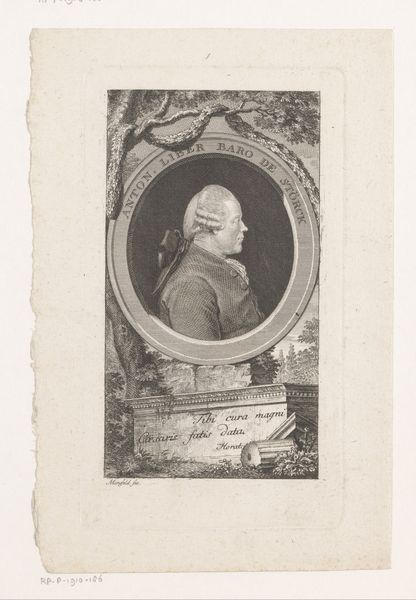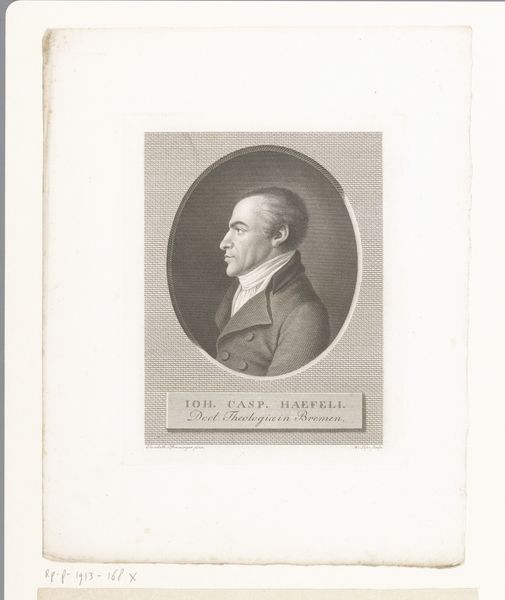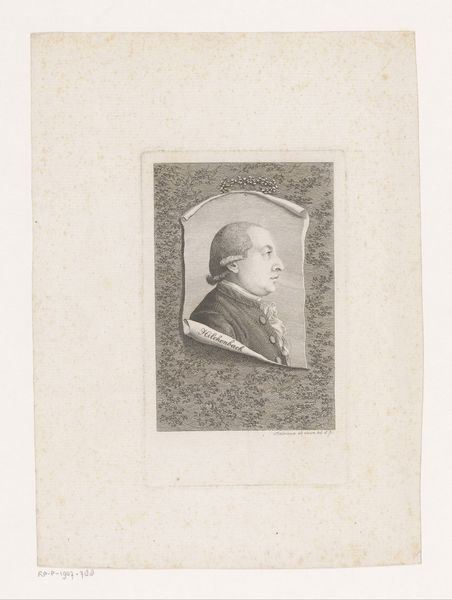
print, engraving
#
portrait
#
neoclacissism
# print
#
old engraving style
#
historical photography
#
history-painting
#
engraving
Dimensions: height 135 mm, width 96 mm
Copyright: Rijks Museum: Open Domain
This is Johann Heinrich Lips’s portrait of Johannes Hoze, an engraving. This means the image was incised into a metal plate, likely copper, and then printed. Think about the labor involved. The engraver would have used specialized tools – burins, scrapers, and burnishers – to create precise lines and tonal variations. See how the lines create shading on Hoze’s face and clothing, and the texture of his fur collar. The artist would need to understand the effects of each tool and how they would translate when inked and printed. Engraving was essential for disseminating images, like portraits, in the era before photography. It was a skilled craft, demanding both artistic talent and technical expertise. Lips's print thus sits at the intersection of art, craft, and commerce. Appreciating this helps us move beyond simply seeing the image, and towards understanding the means of its production and its place in society.
Comments
No comments
Be the first to comment and join the conversation on the ultimate creative platform.
